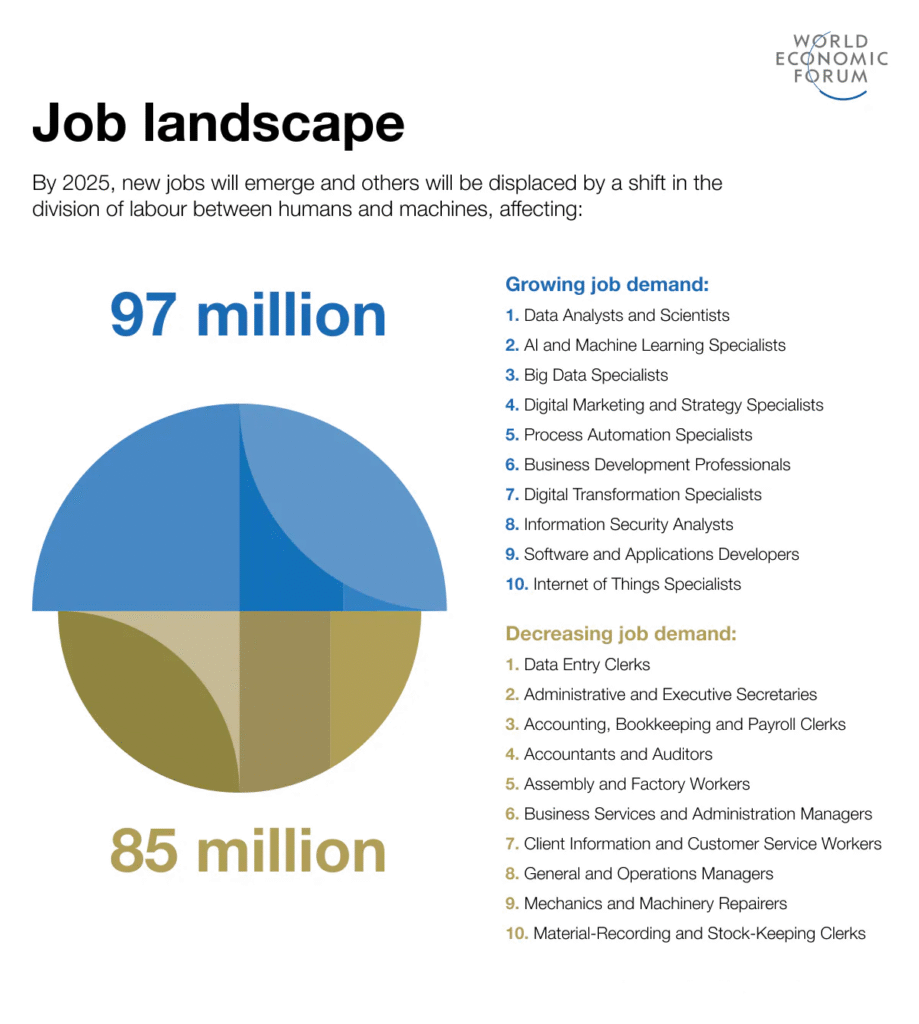AI's Job Impact: 5 Key Insights from the Revolution (2025)
Explore AI's dual role in job creation and displacement, cutting through the hype to reveal data-driven insights into the labor market's future.

Tech Bros, AI Hype, and the Reality of Job Creation: A Balanced Look at the AI Revolution
The ongoing debate around artificial intelligence (AI) and its impact on the workforce has attracted a polarized narrative, often fueled by the so-called “tech bros” — predominantly male tech entrepreneurs and evangelists known for their aggressive hype about AI’s transformative potential. A recent Guardian opinion piece by Pip Finkemeyer critiques this culture of hype, suggesting the world might benefit from ignoring such voices and focusing instead on the grounded realities of AI’s actual effects on jobs and society. This article explores the latest data and expert insights to provide a comprehensive picture of how AI is reshaping the labor market and the economy—not merely as a job destroyer, but also as a job creator and transformation agent.
The “Tech Bros” and the Hype Cycle
The term “tech bros” often refers to a subset of tech industry figures who aggressively promote AI and other emerging technologies as revolutionary forces that will “save the world” or “change everything,” frequently with overstated promises of near-term utopias or dystopias. This hype raises public expectations and anxieties, sometimes obscuring nuanced realities. Pip Finkemeyer’s argument in The Guardian is that this hype culture can be counterproductive and suggests that society might be better served by sidelining these voices to focus on evidence-based assessments.
AI’s Economic Footprint: Growth and Market Size
Recent statistics from Exploding Topics highlight the massive scale and rapid growth of the AI industry. Valued at around $391 billion globally in 2025, the AI market is expected to grow fivefold over the next five years, with a compound annual growth rate (CAGR) of 35.9%. In the US alone, the AI market is nearing $74 billion and projected to continue expanding at nearly 27% annually through 2031.
AI is a high priority for over 80% of companies worldwide, reflecting its widespread adoption and integration across sectors. Netflix, for example, generates about $1 billion annually from AI-driven personalized recommendations, demonstrating tangible business value.
Job Creation vs. Job Displacement: What the Data Shows
While early fears predicted massive AI-driven job losses, current research suggests a more complex reality. According to a 2020 World Economic Forum report and subsequent studies, by 2025, AI is expected to displace around 85 million jobs but also create 97 million new jobs, resulting in a net gain of roughly 12 million jobs globally.
Experts Erik Brynjolfsson, Bharat Chandar, and Ruyu Chen highlight that AI accelerates automation of routine clerical and data-entry tasks, increasing productivity but also necessitating workforce transitions. They estimate that by 2030, 12-14% of workers may need to retrain and transition to new occupations as automation reshapes job roles. New opportunities are emerging in areas such as AI oversight, data quality assurance, and human-AI collaboration.
Furthermore, a 2025 report from Indeed’s Hiring Lab stresses that AI, particularly generative AI (GenAI), is not causing outright job losses but transforming jobs profoundly. Their GenAI Skill Transformation Index indicates that 26% of jobs in the US could be "highly" transformed by AI, with 41% of common work skills exposed to significant AI-driven change. This transformation will depend heavily on how companies adopt and integrate AI tools, with many firms still in early stages of digital maturity.
Labor Market Impact to Date: Mixed Signals
Yale’s Budget Lab analyzed US labor market data since the release of ChatGPT in late 2022 and found that while occupational shifts are occurring rapidly, they are not yet significantly different from previous waves of technological change. There is no broad evidence yet linking AI exposure directly to increased unemployment or job displacement, but early-career and white-collar workers face disproportionate challenges.
AI as a Driver of Economic Growth
Goldman Sachs research projects that AI will boost US labor productivity, increasing the economy’s potential growth rate to about 2.1% annually between 2025 and 2029, with further acceleration in the early 2030s. This productivity boost is critical given slowing workforce growth. AI’s impact on productivity could offset demographic headwinds such as declining labor force participation, supporting sustained GDP growth.
Broader Workforce Implications and Calls for Action
The World Economic Forum’s “Jobs of Tomorrow” report emphasizes that AI, robotics, and other technologies are reshaping major global job families including agriculture, manufacturing, healthcare, and logistics, which together employ 80% of the world’s workforce. The report highlights both opportunities for increased productivity and risks of disruption, particularly for vulnerable workers. It calls for coordinated efforts by employers, governments, and technology developers to ensure technological advances translate into inclusive, high-quality employment.
Visual Representation of the Debate and AI’s Impact
- Images of technology entrepreneurs (often labeled as “tech bros”) speaking at conferences or in media interviews illustrate the hype culture.
- Infographics showing AI market growth, job displacement vs. creation estimates, and productivity projections help visualize the scale and nuances of AI’s labor market impacts.
- Photos of workers in AI-augmented settings — such as healthcare professionals using AI diagnostic tools or logistics workers assisted by robotics — depict AI’s real-world integration.
AI’s impact on jobs and the economy is complex and multifaceted. While some voices in tech hype disproportionate fears or hopes, the evidence points to AI as a powerful agent of job transformation, creating new opportunities even as it disrupts traditional roles. The challenge for policymakers and society is to manage this transition thoughtfully, prioritizing retraining and inclusive growth to harness AI’s potential while mitigating its risks. Ignoring hype and focusing on data-driven analysis will be essential to navigating the future of work.
Images sourced from recent tech conferences, AI industry reports, and workplace AI implementations provide relevant context and visual grounding for this evolving story.



